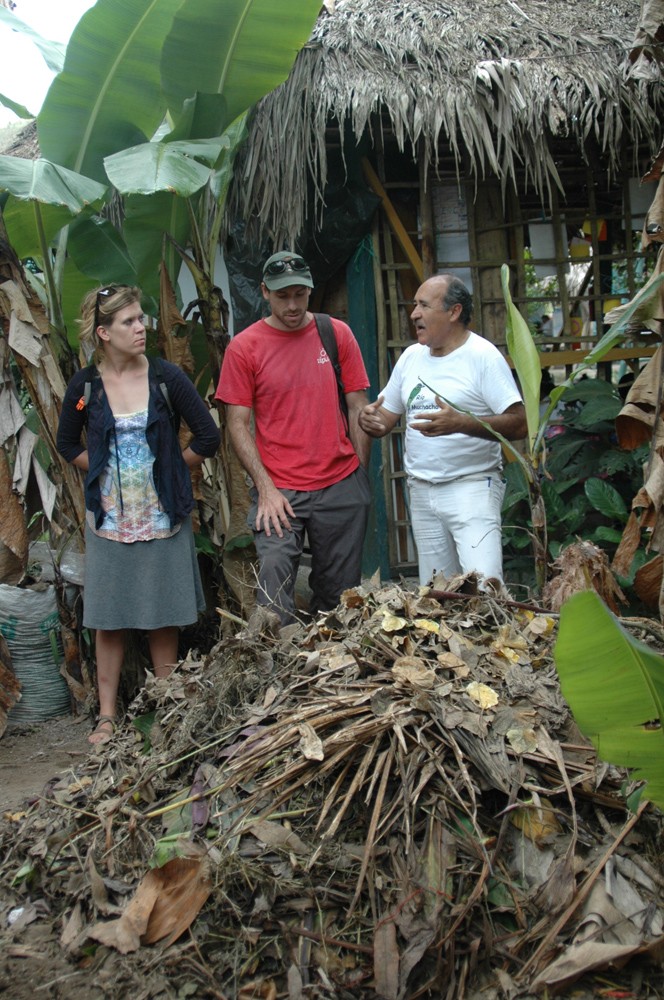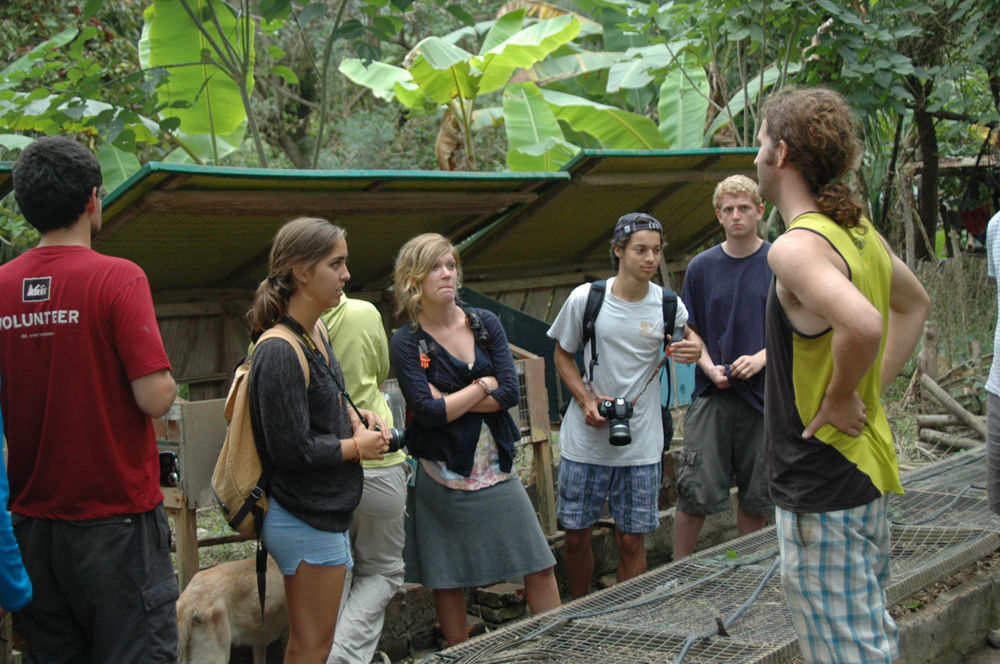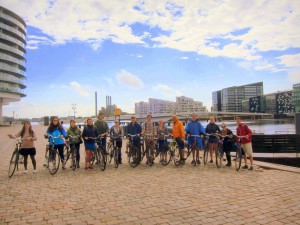The UO students who joined PPPM Assistant Professor Gerardo Sandoval’s summer study abroad program in Ecuador, “Breaking borders: creating bioregional communities,” may not have been fully aware of what was in store for their travels. No one can blame them, however. It’s not often that study abroad courses require students to be handy with machetes, haul gallons upon gallons of water over long distances on numerous occasions or plant hundreds of trees. But, the students and professor wouldn’t have asked to change much.

For Emma Newman – a senior environmental studies major – the class experience and its lessons makes up one of her pinnacle experiences while attending the University of Oregon. “I learned so much from the class by doing things in the field, actually engaging in the projects, and physically seeing how change is occurring,” Newman says. “This class reaffirmed that in order for me to learn really well, I need to be physically engaging in whatever I’m doing.”
Sandoval’s course engaged sixteen UO students from multiple disciplines and undergraduate and graduate levels over three weeks this past summer in Bahía de Caráquez (Bahía), Ecuador. Bahía is located on the Pacific coastal region (La Costa) of Ecuador. The city suffered from two natural disasters in 1997 and 1998. The first was due to heavy rains from an El Niño weather pattern, resulting in mudslides that destroyed areas of the city, fatally wounding many citizens and ruining much of the shrimp industry, one of the largest business sectors in the area. While the city was still recovering from this, an earthquake hit in 1998 causing buildings to flood, crack and crumble, and the already saturated clay hillsides to slip. These back-to-back disasters made residents more aware of their natural surroundings and led the way for Bahía to commit to becoming an ecocity (ecociudad) – a more ecologically sustainable city – in 1999.
The coursework focused on how Bahía’s bioregion is supporting the ecocity commitment. “Bioregionalism is about thinking about place and the ecosystem that supports the place, and how the region serves as a key organizing scale for human activity,” says Sandoval. “The idea behind this class wasn’t just about staying in the classroom, but it was a bioregionalism class where the purpose was to really explore the region while at the same time leaving something positive behind.”

The class teamed up with the Planet Drum Foundation (PDF) to leave something behind by doing forest restoration work. The mission of San Francisco-based PDF is to promote awareness of sustainable strategies for human inhabitation of Earth, based on the bioregions where people live. PDF has been working in Bahía since 1999, assisting in transforming the city into an ecocity based on bioregional principles.


“In the mornings we would do 3 to 4 hours of pretty intensive manual labor where we would go to the Planet Drum greenhouse in the city and help grow trees, and then plant and maintain trees throughout the region,” says Sandoval. This required the students to water trees planted throughout the region on steep hillsides in jungle-like areas. To ensure the trees grew and were prepared for the rainy season, students turned to a traditional tool: “We did machete work on really steep hillsides with cacti, tarantulas and grasshoppers that were three inches long,” says Newman.
The labor was taxing but allowed the group to witness the impact. One of Newman’s most lasting memories occurred while watering trees on a hillside known as the “Forest amongst the ruins.” “We were literally watering trees that were holding in the land that had slid down and killed 17 Ecuadorians 14 years ago. That experience was more powerful than sitting in a classroom and learning about stuff that is distant.”
In order to make a connection to bioregional theory, students spent the afternoons engaging in academic seminars that allowed students to further explore what they were witnessing on the ground, and taking educational field trips throughout the region every other day. The students also interviewed area stakeholders, and learned technical knowledge around composting, recycling, and sustainable farming.


One field trip that provided lasting technical knowledge was the journey to Río Muchacho, an organic farm 40 minutes from Bahía. “The farm has set up a school that teaches rural students in the area important life skills, such as how to grow banana trees and coffee plants and all sorts of other plants encircling piles of compost,” says Newman. “This is very sustainable agriculture where plant species grow at different rates so they can be harvested at different times. It is a really important life skill for the students, and all the classes happened outdoors. It is so much more interactive for the students than the classrooms they had previously.”

Sandoval believes he may have learned as much as his students. “This class changed my perspective about doing ecological development work in Latin America. It’s a realistic thing to do, and it’s something that doesn’t have to come from the U.S. or some other developed country. The development can come about organically and come from countries in Latin America. Here you have an example of a city trying to do things in a different way, and in many ways Bahía is much more cutting edge in sustainability than many cities in the U.S.”
“Another key thing that I learned was more about pedagogy, where you have to immerse students in an environment that is conducive to learning, and if you do this and provide students with a framework and academic content, the students will soak it up and learn a ton,” Sandoval says. “I think the environment that we were in was conducive for this to happen because 1) the region is a wonderful bioregion; 2) the city is actually trying to implement policies that relate to sustainability; and 3) there is an NGO that is conducting great work around reforestation. So you had all the elements there for the students to dig into and really think critically about what they are seeing. It made the experience very unique.”

The students in the class deserve a lot of the credit for the course’s success as well. “The students were really passionate about the issues being taught and experienced, which made it really fun to teach,” Sandoval says. “I really learned a lot from my students.”
—
Story by Joe McAndrew;A&AA Writer/Videographer Graduate Teaching Fellow





